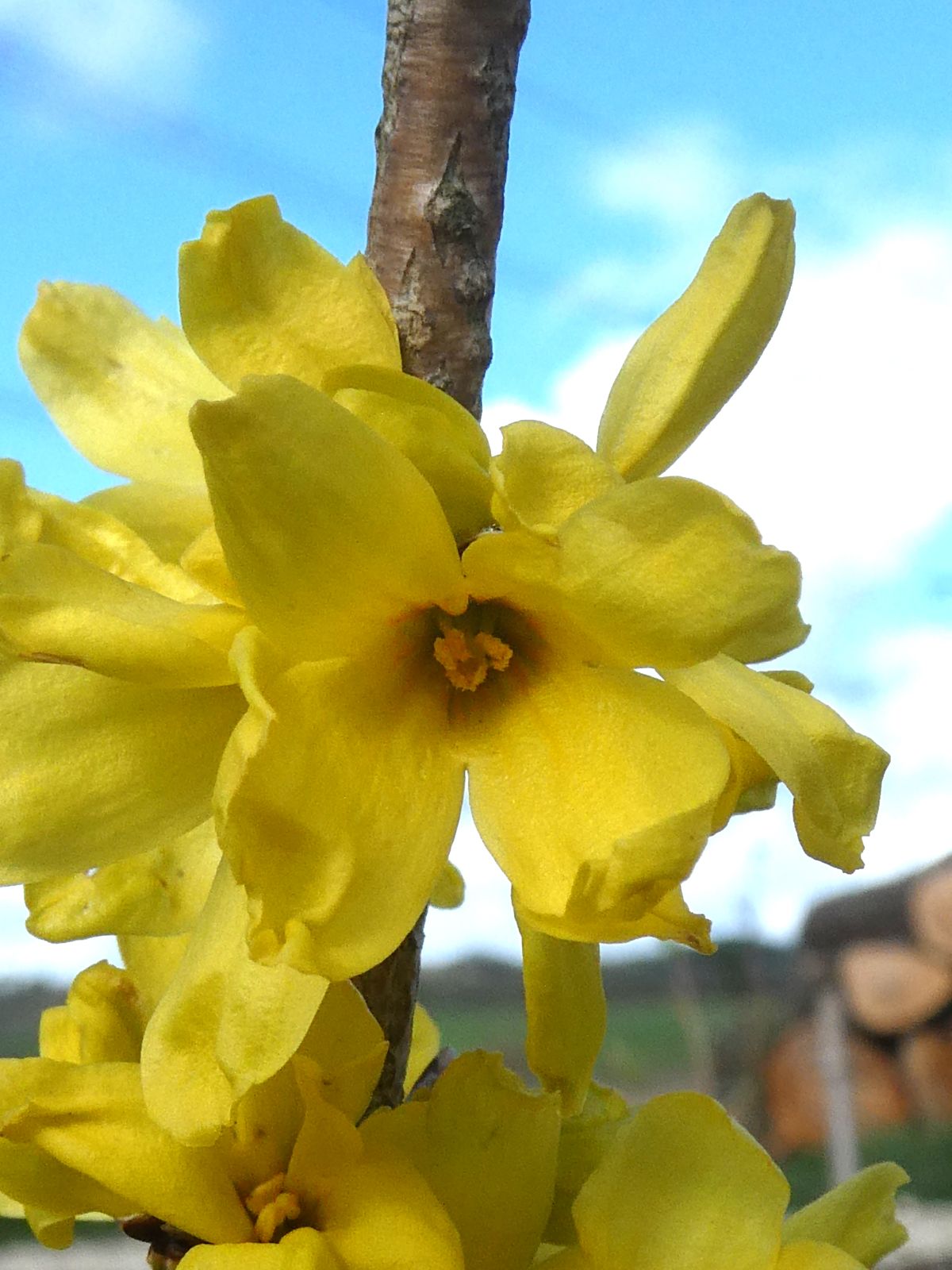Forsythia × mandshurica
Sponsor
Kindly sponsored by
Monique Gudgeon, Sculpture by the Lakes
Credits
Owen Johnson (2022)
Recommended citation
Johnson, O. (2022), 'Forsythia × mandshurica' from the website Trees and Shrubs Online (treesandshrubsonline.
Genus
Common Names
- Manchurian Forsythia
Synonyms
- Forsythia × mandshurica 'Vermont Sun'
- Forsythia 'Vermont Sun'
Other taxa in genus
- Forsythia 'Arnold Dwarf'
- Forsythia europaea
- Forsythia 'Fontanna'
- Forsythia 'Ford Freeway'
- Forsythia giraldiana
- Forsythia 'Gold Splash'
- Forsythia 'Golden Times'
- Forsythia 'Happy Centennial'
- Forsythia 'Helios'
- Forsythia × intermedia
- Forsythia japonica
- Forsythia 'Kanárek'
- Forsythia × kobendzae
- Forsythia koreana
- Forsythia likiangensis
- Forsythia 'Little Renee'
- Forsythia 'Maluch'
- Forsythia 'Meadowlark'
- Forsythia nakaii
- Forsythia 'New Hampshire Gold'
- Forsythia 'Northern Gold'
- Forsythia 'Northern Sun'
- Forsythia ovata
- Forsythia 'Paulina'
- Forsythia 'Princeton Gold'
- Forsythia 'Robusta'
- Forsythia saxatilis
- Forsythia 'Spring Beauty'
- Forsythia 'Spring Gold'
- Forsythia suspensa
- Forsythia 'Tremonia'
- Forsythia × variabilis
- Forsythia 'Verfors'
- Forsythia viridissima
- Forsythia 'Winterthur'
- Forsythia 'Yatgold'
Shrub to c. 1.5 m tall, spreading vegetatively. Twigs green then greyish-yellow, glabrous; pith chambered; buds blackish. Leaf suborbicular to elliptic, 5–12 × 3–7 cm, short-pointed or blunt-tipped, rounded at the base, pubescent beneath; margin serrate or more distantly toothed; petiole 5–13 mm, sometimes pubescent. Flowers carried singly at each leaf-scar in early spring. Calyx with ovate-orbicular lobes, ciliate. Corolla yellow, with lanceolate lobes; c. 3 cm wide. Flowers ‘thrum-eyed’ in the cultivated population at least. Fruit long-ovoid, to 1 cm long, seeds abortive. (Chang, Qiu & Green 1996).
Distribution China Liaoning (Jiguan Shan)
Habitat Mountain slopes.
USDA Hardiness Zone 4
RHS Hardiness Rating H7
Conservation status Not evaluated (NE)
Forsythia × mandshurica was described by Homika Uyeki in 1929 as a sterile triploid clone spreading vegetatively on the slopes of Jiguan Shan, a mountain in the north-eastern Chinese province of Liaoning (DeWolf & Hebb 1971). Its unusually broad ovate leaves have been taken to imply that one of its original parents was F. ovata, and genetic studies by Ki-Joong Kim in 1999 suggested the other parent was probably F. koreana or F. saxatilis (Kim 1999). As the current known areas of distribution of these three Korean endemics lie at least 400 km to the east of Jiguan Shan, the implication seems to be that F. × mandshurica has persisted here over a very long period. For this reason, the hybrid marker is frequently dropped from the name.
Like its putative Korean ancestors, Forsythia × mandshurica is a very hardy plant, and its flower-buds are sometimes able to survive 30–35°C of frost (Dirr 2009), although the blossom is not so profuse as in some garden forsythia forms (Hatch 2021–2022). In 1940, the Montreal Botanical Garden in Canada received cuttings from L. Ptitsin in Harbin, and the plant was also introduced to the Finnish Forest Research Institute. The Arnold Arboretum in Massachusetts received material from this source in 1968 (Arnold Arboretum 2018), and in the same year the University of Vermont obtained cuttings from Montreal. In 1978 this stock was registered by Dean Evert and Norman Pellett under the name ‘Vermont Sun’ (Hatch 2021–2022), though as F. × mandshurica seems itself to be a single, vegetatively reproducing clone, ‘Vermont Sun’ should probably not be treated as a cultivar.
Forsythia × mandshurica is represented in the UK’s National Collection at Sculpture by the Lakes in Dorset by a plant received from Burncoose Nurseries (M. Gudgeon pers. comm.). It is also grown (as ‘Vermont Sun’) at the Uppsala Botanical Garden in Sweden (Royal Botanic Garden Edinburgh 1997). It is the earliest forsythia to bloom in spring in a collection at Angers in western France (Cadic 1988).

